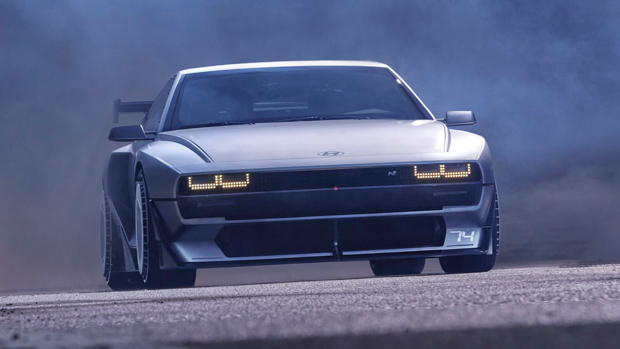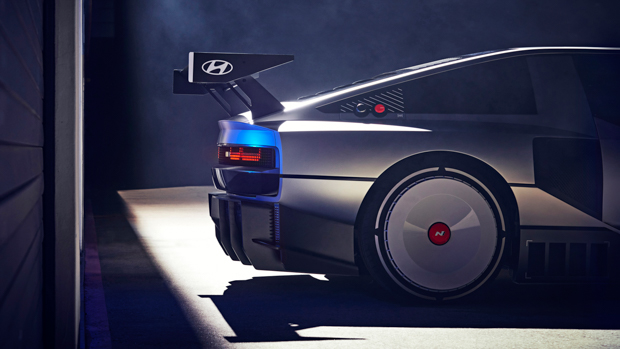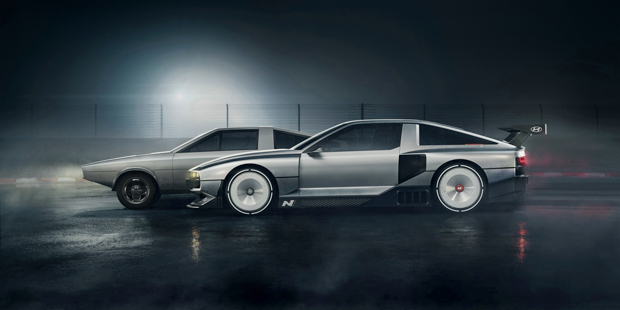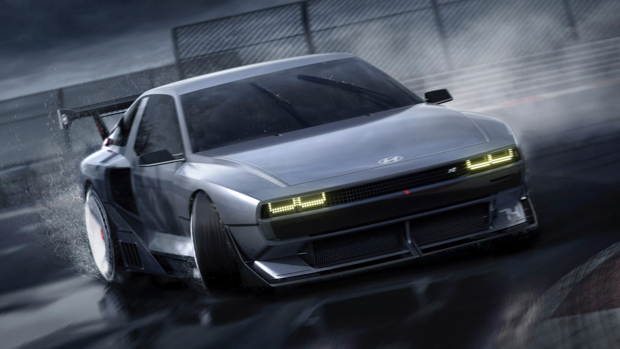-
Car Reviews
- All reviews
- Midsize SUVs
- Small cars
- Utes
- Small SUVs
- Large SUVs
- Large cars
- Sports SUVs
- Sports cars
- Vans
Latest reviews
- Car News
-
Car Comparisons
Latest comparisons
- Chasing Deals
Hyundai to continue to focus on relatively affordable models in the electric era, but Genesis offers a candle for production N Vision 74-type vehicle
Hyundai executive technical adviser Albert Biermann says that despite the brand’s decision to develop a hydrogen-electric hybrid vehicle with near-supercar performance, the South Korean manufacturer will avoid introducing new models at supercar-level price points.
The Hyundai N Vision 74 is a two-door, battery electric coupe with two rear electric motors supported by a range- and power-boosting on-board hydrogen fuel cell stack. Producing about 500kW in total power, it’s a highly sophisticated concept – and expensive one.
While it is unlikely to be released as a Hyundai, the premium-tier N Vision 74 prototype – or a future production model like it – could be produced as a luxury model sold by Genesis.
“One strong point of N is to bring an exciting driving experience to customers at an affordable price, a reasonable price level, avoiding the super-fancy, high performance car price segment. We are Hyundai – we know we don’t want to go there,” said Biermann.
Speaking with Chasing Cars after editor Tom Baker drove the N Vision 74 prototype on track, Biermann confirmed that the coupe was initially planned to be a Genesis model.
“[As a] lighthouse model, it makes a lot of sense, and to have a really high-tech car in a very charming, tempting design and silhouette, you can find customers.
“But is that representative of the affordable and fun-to-drive car [Hyundai N is known for]? Definitely not. It is a different story. They are different customers.
“We cannot bring [the N Vision 74] to our N community and say, ‘here’s your next N!’ That makes no sense. But to make such a unique, luxury, high-tech vehicle – that can make sense.”
Despite Hyundai initially planning to reveal the N Vision 74’s hydrogen-hybrid supercar tech in a Genesis model, it is understood that Hyundai design chief Sangyup Lee mounted a compelling case for designing the N Vision 74 as a reference to the brand’s 1974 Pony Coupe concept, leading to the prototype wearing Hyundai N badges.
Like Hyundai’s seventies Pony hatch – referenced by the design of the current Ioniq 5 – the Pony Coupe concept was penned by Giorgetto Giugaro. When Hyundai did not proceed with the two-door model, Giugaro used the styling as the basis for the Delorean DMC-12 made famous by the Back to the Future films.
Albert Biermann launched and led Hyundai’s N performance division after an illustrious career with BMW. The German also managed Hyundai’s broader R&D efforts, during which time the N Vision 74 was envisioned as a “lighthouse project to show the opportunities and possibilities” of incorporating a hydrogen fuel-cell into an electric sports car.
The N Vision 74’s on-board fuel cell endows the coupe with 85kW of power for in-town running, faster five-minute refuelling, and more range thanks to the ability of the fuel-cell to charge the circa-62kWh lithium-ion battery on the fly. When the fuel cell and twin battery-fed electric motors are fully engaged, the vehicle produces 500kW/900Nm.
Packaging the large battery, 4.2kg in hydrogen storage, the fuel cell and extensive thermal management systems was a significant challenge. The hydrogen componentry in particular adds expense and weight, with the N Vision 74 weighing in at about 2400kg.
The dual rear electric motors – one per rear wheel – are developed from the Rimac-sourced power-electric unit employed by Hyundai’s Veloster-bodied e-TCR race car, and the hydrogen-hybrid technology is already on the road in Switzerland, albeit in the form of Hyundai’s Xcient trucks.
Early prototypes for the N Vision 74 concept with dual rear motors, hydrogen tanks and an on-board fuel-cell stack used the body of the Kia Stinger – a vehicle of similar overall propotions to the 4915mm-long and near two-metre wide Hyundai coupe.
Latest news
About Chasing cars
Chasing Cars reviews are 100% independent.
Because we are powered by Budget Direct Insurance, we don’t receive advertising or sales revenue from car manufacturers.
We’re truly independent – giving you Australia’s best car reviews.



